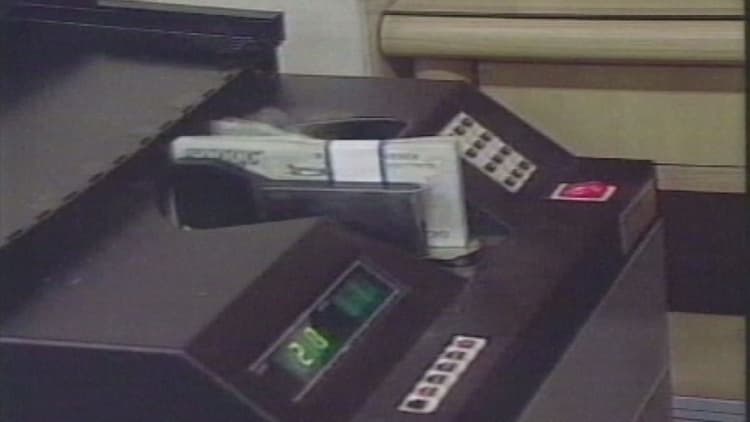
Markets may have punished the Bank of Japan's (BOJ) surprise decision to stand pat on policy at its meeting last week, but it was the right call, Bank of America-Merrill Lynch said.
"The BOJ could have implemented full-fledged easing for one last time, boosted markets, and depleted its ammunition," it noted in a report published Wednesday.
"But global conditions are far from favorable, and if a full-fledged global crisis occurred, could the BOJ respond?"
The central bank decided to hold onto its ammunition, BofA said, calling it a "situation of damned if you do and damned if you don't."
So far, the effects of BOJ easing have been limited. The central bank last week cut its gross domestic product (GDP) growth forecast for 2016-2017 to 1.2 percent, compared with January's forecast for 1.5 percent expansion.
Last week, the BOJ stood pat with its negative interest rate policy on its deposit rate and its planned quantitative easing target of increasing the monetary base by 80 trillion yen ($800 billion) annually. That blindsided markets, which had expected the BOJ to hit the ground with yet another big bazooka of easing measures.
Markets have struck back, with the benchmark Nikkei index down nearly 8 percent since the decision and the yen, considered a safe-haven play, climbing against the dollar. The greenback was fetching as little as 105.66 yen Tuesday, down from levels over 111 yen before the BOJ meeting.
But BofA is skeptical of whether the BOJ should have bowed to market expectations.
"It would have been difficult for the BOJ to either lower negative interest rate further or increase its JGB [Japan government bond] purchases," the note said. "The introduction of a negative interest rate caused a warning light to flash for the sustainability of QQE [qualitative, quantitative easing], and further quantitative expansion would probably shorten the policy's lifespan."
The negative interest rate policy, which charges banks to park funds at the BOJ in an attempt to encourage lending, was introduced in late January in a surprise move by the central bank. But the policy hasn't functioned as expected, with the yen counter-intuitively strengthening on the move.
BofA noted that the policy of applying negative rates to banks' excess reserves didn't take effect until mid-February and trust banks began passing the cost on to fund management companies in mid-April.
That spurred the management companies to pass the cost on to investors, which worked against the BOJ's efforts to encourage portfolios to rebalance toward riskier assets, BofA noted.
While some market watchers had expected the BOJ to increase its purchases of stock exchange-traded funds and Japan real-estate investment trusts (J-REITs), that also carries risks, BofA said.
"That would be considered a clear case of the central bank supporting stock prices, which would invite the question of whether that was permissible for monetary policy," it said. "Further, such action would give the impression that the BOJ was at the end of its rope in monetary policy."
BofA also isn't looking only to the central bank for further measures to boost the economy, noting that the government is expected to unveil fresh steps this month around the G7 summit, which will be held in Japan.
—CNBC's Katy Barnato contributed to this article.
Follow CNBC International on Twitter and Facebook.
—By CNBC.Com's Leslie Shaffer; Follow her on Twitter @LeslieShaffer1




